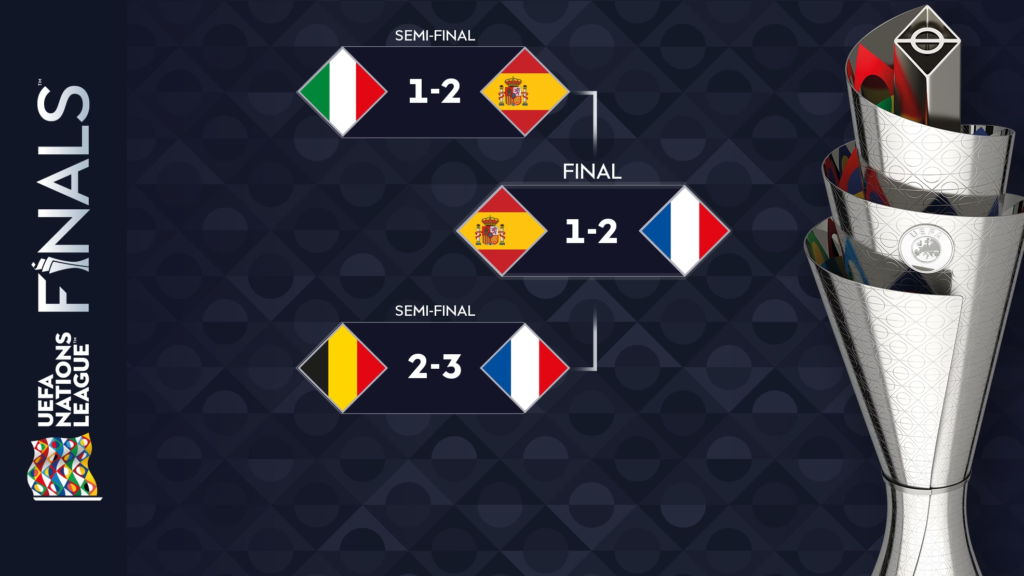The UEFA Nations League, standings a relatively new competition in the European football calendar, has quickly established itself as a highly competitive and exciting tournament. It offers national teams a chance to play meaningful matches throughout the year, beyond the traditional international break windows.
The 2024/2025 season has been particularly intriguing, with several high-profile nations vying for glory. This article delves into the key aspects of the competition, including its format, the current standings, and the implications for future tournaments.
Understanding the Format
The UEFA Nations League standings is divided into four leagues: A, B, C, and D. Teams are grouped based on their UEFA coefficient ranking, with the top-ranked nations competing in League A.
League A: The top tier consists of 16 teams divided into four groups of four.
League B: This league comprises 16 teams in four groups of four.
League C: This league fixtures 16 teams in four groups of four.
League D: The bottom tier has 16 teams in four groups of four.
At the end of each league phase, teams are promoted or relegated based on their final positions. The top four teams in League A progress to the semi-finals and final of the Nations League.
The 2024/2025 Season: A Closer Look
The 2024/2025 season has seen some thrilling matches and unexpected results. Let’s take a closer look at the current standings and key storylines:
League A
Group A1: Portugal leads the group, followed by Croatia, Scotland, and Poland. Portugal’s strong performances have solidified their position as one of the favorites to win the competition.
Group A2: France currently tops the group, with Italy, Belgium, and Israel occupying the other positions. The rivalry between France and Italy has added extra spice to this group.
Group A3: Germany has been dominant in their group, with the Netherlands, Hungary, and Bosnia and Herzegovina trailing behind.
Group A4: Spain leads the group, followed by Switzerland, Czech Republic, and Ukraine. Spain’s resurgence under their new manager has been impressive.
League B
Group B1: Denmark is currently top of the group, with Finland, Albania, and Kazakhstan occupying the other positions.
Group B2: Norway leads the group, followed by Slovenia, Serbia, and Cyprus.
Group B3: Turkey is currently top of the group, with Sweden, Ireland, and Bulgaria in the other positions.
Group B4: Greece leads the group, followed by Romania, Northern Ireland, and Kosovo.
League C
Group C1: Israel is currently top of the group, followed by Montenegro, Cyprus, and Faroe Islands.
Group C2: Iceland leads the group, followed by Luxembourg, Moldova, and Liechtenstein.
Group C3: Georgia leads the group, followed by Belarus, North Macedonia, and Gibraltar.
Group C4: Armenia leads the group, followed by Andorra, Latvia, and Estonia.
League D
Group D1: Malta leads the group, followed by San Marino, Liechtenstein, and Andorra.
Group D2: Gibraltar leads the group, followed by Malta, San Marino, and Liechtenstein.
Group D3: Andorra leads the group, followed by San Marino, Gibraltar, and Liechtenstein.
Group D4: San Marino leads the group, followed by Liechtenstein, Gibraltar, and Andorra.

Key Takeaways from the 2024/2025 Season
Portugal’s Dominance: Portugal has been the standout team in League A, showcasing their attacking prowess and defensive solidity.
France’s Resurgence: After a period of inconsistency, France has regained their form and is a strong contender for the title.
Germany’s Strong Performance: Germany has been impressive in their group, with their young talent emerging as key players.
Spain’s Revival: Spain’s resurgence under their new manager has been notable, with the team playing with renewed energy and purpose.
Underdogs Making Noise: Several underdog teams have surprised pundits with their performances, highlighting the competitive nature of the Nations League.
Key Features of the Nations League
League Format: Teams are divided into four leagues (A, B, C, and D) based on their UEFA coefficient ranking.
Promotion and Relegation: Teams can be promoted or relegated between leagues at the end of each season, ensuring a dynamic and competitive environment.
Knockout Stage: The top four teams from League A advance to the semi-finals and final.
Why the Nations League Matters:
Competitive Edge: Regular high-stakes matches help national teams maintain a sharp competitive edge.
Improved Rankings: Strong performances in the Nations League can boost a team’s UEFA coefficient ranking, influencing seeding in major tournaments like the European Championship and World Cup.
Fan Engagement: The Nations League offers fans more opportunities to watch their national teams in action, generating excitement and passion.
Financial Benefits: The competition generates significant revenue for UEFA and its member associations, which can be reinvested into grassroots football development.
Implications for Future Tournaments
The UEFA Nations League standings has proven to be a valuable addition to the international football calendar. It provides teams with competitive matches throughout the year, helping them prepare for major tournaments like the European Championship and the World Cup.
The competition also has a significant impact on the UEFA coefficient rankings, which determine seeding for major tournaments. Teams that perform well in the Nations League can improve their rankings and secure favorable draws.
As the 2024/2025 season progresses, fans can expect more exciting matches and thrilling moments. The Nations League has undoubtedly enhanced the quality and competitiveness of international football.
FAQs
What is the UEFA Nations League?
The UEFA Nations League standings is a biennial international football tournament involving the men’s national teams of the UEFA member associations. It was introduced to replace less competitive friendly matches with meaningful games, elevating the overall quality of international football.
Why was the Nations League introduced?
The primary goals of the Nations League are:
Increased Competition: To provide national teams with more competitive fixtures throughout the year.
Enhanced Preparation: To help teams prepare for major tournaments like the UEFA European Championship and FIFA World Cup.
Improved Rankings: To influence UEFA coefficient rankings, which determine seeding in major tournaments.
Fan Engagement: To provide fans with more exciting and meaningful international football matches.
What happens at the end of the league stage?
Promotion and Relegation: Teams can be promoted or relegated between leagues based on their final positions.
Knockout Stage (League A): The top four teams from League A advance to the semi-finals and final.
To read more, Click Here
